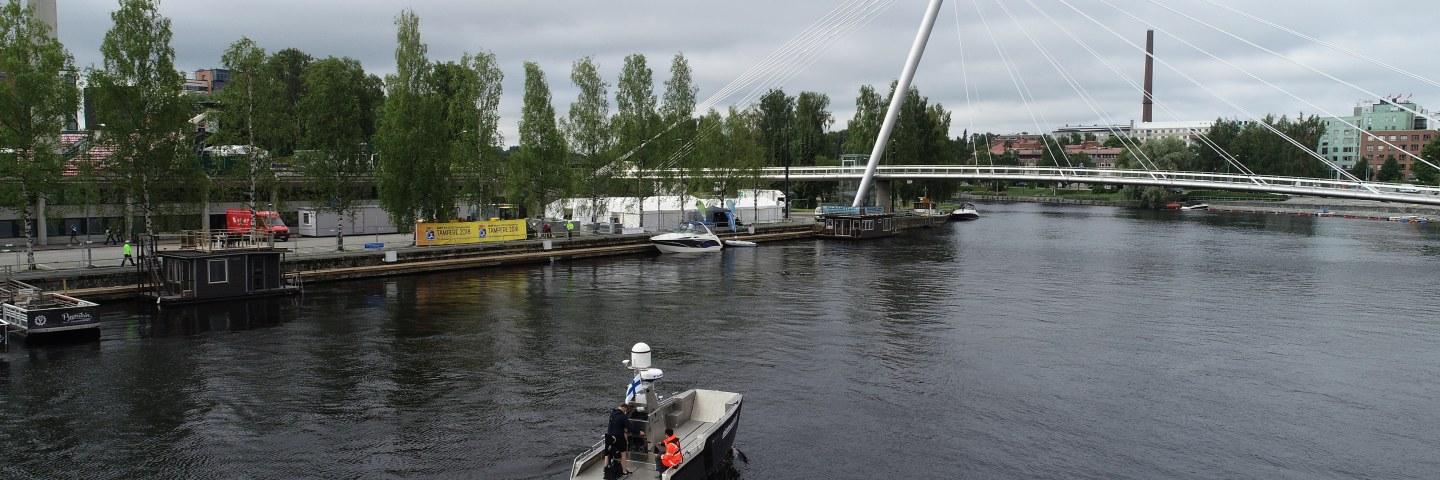Autonomous and Collaborative Offshore Robotics (aColor) creates the basic methodology for an autonomous offshore robotic system and open demonstration in a working environment. The autonomous robotic system includes collaborative features between an Unmanned Aerial System (UAV), an Unmanned Surface Vehicle (USV), and an Autonomous Underwater Vehicle (AUV). These features carry out inspections or other actions without a need for any kind of human interaction.
The key focus area in this research opening is digitalization, and the main objective of the research opening is to develop novel collaborative methods for an autonomous robot system, which could operate in offshore operation environment and to have a possibility to cover all three elements (aerial, surface and subsea) of the environment.
Background
aColor has been focusing on basic methodologies for an autonomous offshore system, developing Guidance, Navigation and Control (GNC) algorithms, situational awareness, and evolving capabilities tasks. Furthermore, several offshore field-tests and demonstrations have been carried out for all three subsystems achieving numerous goals from the different research fields involved in the project. These goals have been achieved from a proof-of-concept point of view, obtaining outstanding results in offshore robotics applications. In conclusion, the research areas of mechatronics, machine learning, and communications need to be intertwined to produce a successful autonomous offshore multicomponent robotic system. From the mechatronics point of view, the model-based architecture allows for a rapid-prototyping procedure for the GNC algorithms in any of the offshore subsystems. From the machine learning side, it is possible to include the obstacle avoidance capabilities based on a water segmentation algorithm, which permits the detection and recognition of objects in the water. From the communication side, inexpensive low-latency, high-speed, and long-range bidirectional connections between autonomous subsystems offer the possibility to monitor and control the subsystems in case of emergency. Regarding cooperation between different offshore subsystems, the main challenges and approaches for providing a robust mechanical solution to move and restrain a landing UAV to a predefined position on a surface for battery charging are also presented. Finally, the methods for the accurate landing of the UAV in the USV platform are presented using a combination of visible and Radio-Frequency (RF) cues, which ensures operability in all weather conditions.
Funding source
This research opening is funded by Teknologiateollisuuden 100-vuotissäätiö and Jane ja Aatos Erkon säätiö, under the Future Makers 2017 program. Project duration is 3 years, from January 2018 until December 2020.
Co-operators
The main co-operation in this research opening includes research groups from Tampere University and Tampere University of Applied Science (TAMK), with the industrial co-operation of Alamarin-Jet Oy , forming a consortium with experts in all research fields related to offshore robotic systems. International Research networking has been also an active part of the co-operation for this research. The research co-operation involved in the project is formed by:
- Tampere University (TAU):
- Mechatronics Research Group. Prof. Kari T. Koskinen, Dr. Jussi Aaltonen, Doctoral Researcher Jose Villa Escusol.
- Research group: Wireless Communications and Positioning. Prof. Mikko Valkama, Asst. Prof. Sergey Andreev.
- Research group: Signal Processing. Prof. Moncef Gabbouj, Dr. Jenni Raitoharju.
- Tampere University of Applied Science (TAMK). Dr. Markus Aho.
Contact persons
Kari Koskinen
Professor, Mechatronics Kari Koskinen
Kari KoskinenJussi Aaltonen
Research Manager Jussi Aaltonen
Jussi Aaltonen